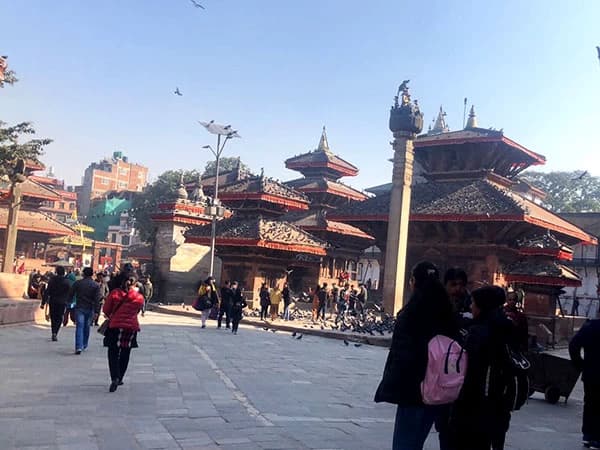Trek Overview
Annapurna Base Camp (ABC) Trek is one of Nepal’s most popular and scenic treks, offering a remarkable journey through diverse landscapes, rich culture, and breathtaking views of the Annapurna mountain range. Here are the key highlights of this incredible trek:
The trek offers close-up views of some of the highest peaks in the world, including Annapurna I (8,091 meters), Machapuchare (6,993 meters), Dhaulagiri (8,167 meters), Himalchuli (7,893 meters), and Ganga Purna (7,455 meters). As you ascend, the dramatic shift in landscape from lush forests to alpine meadows and the stunning Himalayan backdrop is awe-inspiring. The sunrise at Annapurna Base Camp is particularly magical, with the mountains glowing in the early light.
The ABC trek also offers an enriching cultural experience as you pass through traditional Gurung and Magar villages. The trekking route takes you through picturesque settlements like Ghorepani, Chhomrong, and Tadapani, where you’ll get a glimpse into local life and customs. The people in these villages are welcoming, and trekkers have the chance to interact with locals, learn about their traditions, and explore ancient monasteries and temples along the way.
One of the most striking features of the ABC trek is its diverse ecosystems. The trek starts at lower altitudes, where you walk through lush rhododendron forests, terraced fields, and charming villages. As you climb higher, the vegetation changes to alpine meadows, offering more open views of the surrounding peaks. By the time you reach the base camp, you’re surrounded by towering snow-capped peaks, glacial rivers, and jagged ridges, providing an unforgettable panoramic view of the Himalayas.
The trek passes through the Annapurna Conservation Area, which is Nepal’s largest protected area. This region is home to diverse wildlife such as Himalayan tahr, musk deer, snow leopards, and a wide variety of bird species. The flora is just as impressive, with lush forests of rhododendrons, oak, and pine. The area also offers rich opportunities for birdwatching, with the chance to see species like the Danphe (Himalayan monal), Nepal's national bird.
While the trek to Annapurna Base Camp is classified as moderate, it is still physically demanding. The highest point at 4,130 meters presents a risk of altitude sickness, which makes acclimatization an important part of the trek. However, the gradual ascent and scenic beauty make it a rewarding challenge. Reaching the base camp is a triumph, especially after the hard work of trekking through varying altitudes and terrain.
A popular side hike on the ABC trek is a visit to Poon Hill, known for its panoramic sunrise view of the Annapurna and Dhaulagiri ranges. The early morning hike to the summit of Poon Hill rewards trekkers with one of the best sunrise views in Nepal, where the first light bathes the snow-capped peaks in gold.
The trek is well-supported with tea houses along the route, offering basic yet comfortable accommodation and meals. These cozy stops are a chance to rest, recharge, and enjoy traditional Nepalese dishes like dal Bhat (lentil soup with rice) and momos (dumplings). The hospitality of the tea house or lodge owners adds a special touch to the trek, making it a more personal experience.
The Annapurna Base Camp trek is an ideal journey for trekkers looking to experience the beauty of the Himalayas while enjoying cultural encounters and diverse landscapes. With its majestic mountain views, vibrant local culture, and a sense of adventure, the trek provides an unforgettable trekking experience for all who take part.
Highlights
- Close-up views of Annapurna I, Annapurna South, Machapuchare (Fishtail), Hiunchuli, and more from Annapurna Base Camp at 4,130 meters.
- Experience varied scenery from terraced fields to lush rhododendron forests, bamboo groves, alpine meadows, and high-altitude terrains.
- Trek through traditional Gurung and Magar villages, interact with locals and stay in teahouses or Lodge for an authentic Nepalese experience.
- In spring, the trail transforms with vibrant rhododendron flowers, creating a colorful and scenic route.
- Relax in rejuvenating hot springs—a refreshing way to unwind during the trek.
- sacred, unclimbed Fishtail Mountain offers stunning, unique vistas along the route.
- Suitable for trekkers of all levels, providing an achievable high-altitude experience with spectacular scenery.
- A mix of mountain beauty, cultural richness, and natural wonders makes the Annapurna Base Camp trek a Himalayan classic.
Why Annapurna Base Camp Trek?
- Trek with daily views of a glorious panorama of the high Annapurna Himalaya
- Rewards you with sweeping mountain views on each overnight stop
- Walk into the beautiful, magnificent Annapurna Sanctuary hidden between mountains
- Explore impressive Gurung villages enriched with age-old traditions and culture
- Adventure to the world’s tenth highest Mt. Annapurna and its scenic base camp
- Enchanting woodland of tall rhododendron-magnolia-oaks and pine trees
Overall, trekking to Annapurna Base Camp with View Nepal Treks offers a well-organized, safe, and enjoyable adventure that allows you to fully immerse yourself in the beauty and culture of the Annapurna region with us.
Who is suitable for Trek?
- The Annapurna Base Camp (ABC) Trek is suitable for:
- Physically Fit Individuals: Able to walk 5–7 hours daily.
- Beginners and Experienced Trekkers: No prior experience is needed, but preparation helps.
- Ages 12 to 60+ in Good Health: With no severe medical issues.
- Adaptable Travelers: Comfortable with basic teahouse accommodations.
- Altitude-Tolerant Trekkers: Open to acclimatizing at moderate altitudes (up to 4,130m).
- With preparation and a positive mindset, most people can enjoy the ABC trek.
Why Trek With Us?
- Experienced Guides: Safe, knowledgeable, and certified.
- Personalized Itineraries: Tailored to your needs and preferences.
- Safety First: Comprehensive measures and altitude management.
- Local Expertise: Authentic cultural experiences with eco-friendly practices.
- Comfort & Care: Quality accommodations, meals, and dedicated support.
- Transparent Pricing: No hidden costs, great value.
- Choose us for a safe, authentic, and unforgettable Himalayan adventure!








